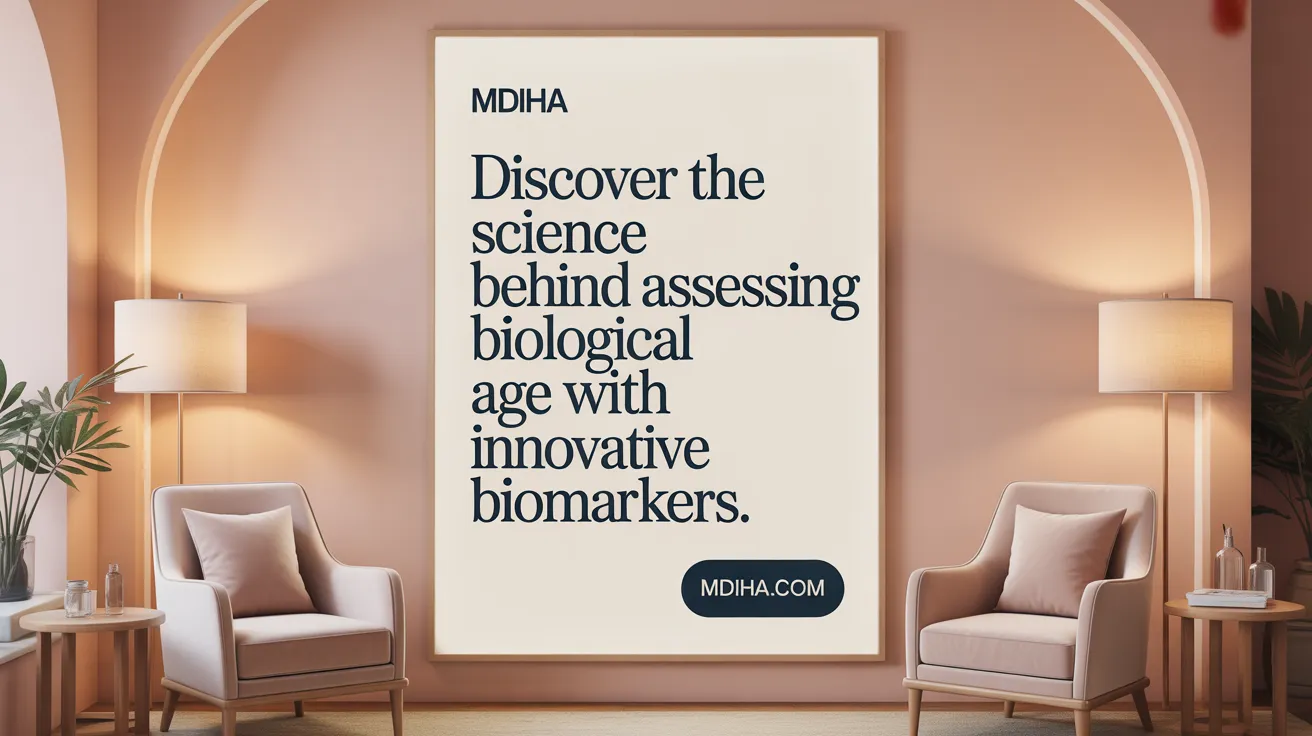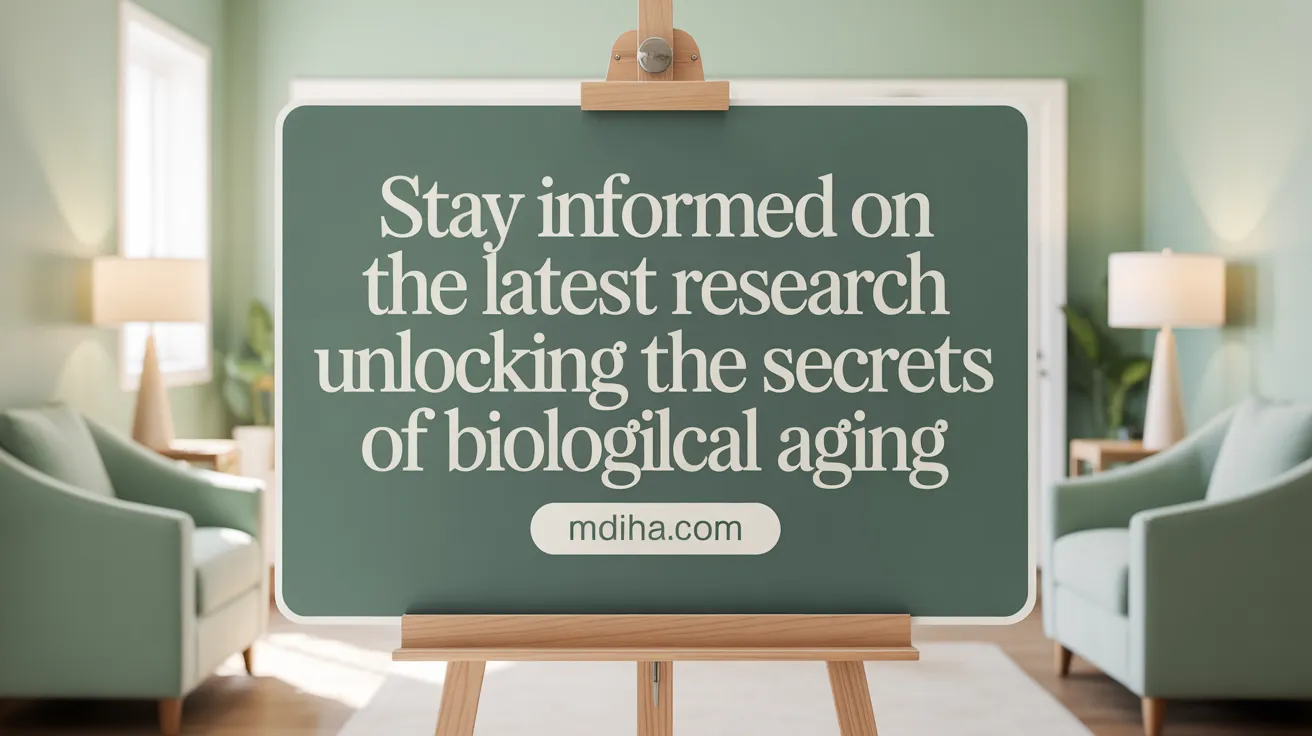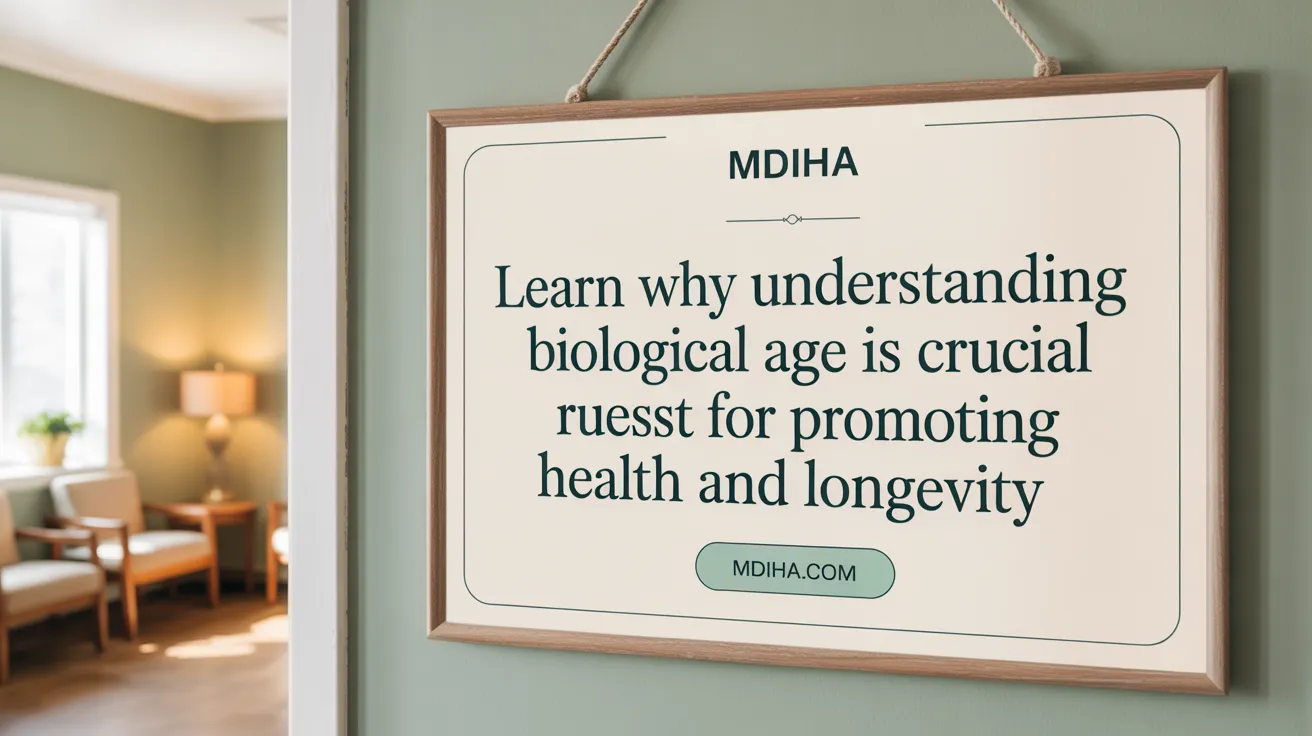Understanding the Hidden Clocks of Aging
While your chronological age simply counts the years you've lived, your biological age reveals how well your body is aging at a cellular and molecular level. This article explores emerging scientific insights and data-driven approaches that are transforming our understanding of aging, revealing which factors influence biological age, how it can differ from chronological age, and why this distinction matters for health and longevity.
Defining Biological Age Versus Chronological Age: The Essential Differences
What is the difference between biological age and chronological age?
Biological age and chronological age are two different ways of measuring aging. Chronological age simply counts the number of years a person has been alive since birth. It progresses uniformly and doesn’t account for how well or poorly someone is aging internally.
In contrast, biological age reflects the condition and functioning of a person’s body and cells. It considers factors such as cellular health, the integrity of DNA, biomarkers, and organ function. Recent advances have made it possible to estimate biological age more accurately using tools like DNA methylation patterns—also called epigenetic clocks—and neuroimaging data. These measures reveal how aging processes are progressing at the cellular and tissue levels.
This distinction is important because biological age can be higher or lower than chronological age. If biological age exceeds chronological age, it indicates accelerated aging and higher health risks, such as disease development. Conversely, if biological age is lower, it suggests healthier, possibly slowed aging.
Key distinctions between the two ages
The main difference lies in what each measure reflects:
- Chronological age: The simple count of years lived.
- Biological age: The functional and physiological state of tissues and cells.
Biological age provides a more comprehensive picture of an individual’s health and aging process. It can be influenced by genetics, lifestyle, environment, and health conditions.
Implications of age differences
Understanding the differences between biological and chronological age has important implications for health and aging. Biological age estimates can more accurately predict the likelihood of developing age-related diseases like heart disease, diabetes, and dementia. They also help tailor interventions aimed at slowing aging and extending healthspan—the period of life spent free of serious disease.
Research shows that measures such as DNA methylation patterns are powerful tools for assessing biological age. These epigenetic clocks correlate strongly with health outcomes and mortality risks, making them valuable for personalized healthcare and aging research. Recognizing that biological age can be distinct from chronological age opens new possibilities for promoting healthier aging and better understanding individual aging trajectories.
Scientific Insights into the Mechanisms and Dynamics of Biological Aging
What scientific insights have been gained regarding biological aging versus chronological aging?
Recent research has significantly advanced our understanding of how biological aging differs from mere chronological aging. Chronological age simply measures the number of years a person has been alive, but it does not accurately reflect an individual's health or functional capacity.
Biological age, on the other hand, is shaped by a combination of genetic, environmental, and lifestyle factors. It provides a more precise picture of how well a person's cells, tissues, and organs are aging. This age can vary between individuals of the same chronological age due to differences in lifestyle choices, exposure to environmental toxins, stress, and genetic predispositions.
One of the most groundbreaking tools for gauging biological age is the development of epigenetic clocks. These are based on DNA methylation patterns — chemical modifications to DNA that influence gene expression without changing the gene sequence itself.
Epigenetic clocks, like PhenoAge, are currently the most accurate predictors of biological age. They analyze methylation data to estimate how 'aged' a person’s cells are compared to their chronological age. Studies show that these clocks correlate strongly with health outcomes, including susceptibility to age-related diseases such as cardiovascular disease, cancer, and cognitive decline.
Moreover, measures of biological age such as PhenoAge, telomere length, and others outperform chronological age in predicting mortality and illness severity, especially in clinical environments like intensive care units. They serve as vital indicators of overall health, highlighting how individual aging processes can accelerate or slow down.
Scientific insights also reveal that aging is not a smooth, linear process. Instead, it appears to involve distinct biological phases with molecular and microbial changes becoming particularly prominent around midlife. These shifts include cellular senescence, DNA damage, and changes in the microbiome, all of which influence how quickly an individual ages.
In summary, current research underscores that biological aging is a complex and dynamic process influenced by multiple factors. The advances in epigenetic technologies and the understanding of molecular and microbial changes are critical to developing targeted strategies to promote healthy aging and extend healthspan, moving beyond age-based assumptions to more personalized, biology-based assessments.
Measuring Biological Age: Key Methods and Biomarkers
 Understanding biological age involves a variety of advanced techniques and biomarkers that go beyond simple chronological counting of years.
Understanding biological age involves a variety of advanced techniques and biomarkers that go beyond simple chronological counting of years.
One of the most prominent methods is the use of DNA methylation patterns, often referred to as epigenetic clocks. These clocks analyze specific CpG sites—regions of DNA where methyl groups attach—to estimate biological age. Examples include the Horvath and Hannum clocks, which have gained recognition for their accuracy in reflecting age-related changes.
Telomere length measurement is another key approach. Telomeres are protective DNA caps at chromosome ends that shorten with each cell division. Various techniques such as quantitative PCR (qPCR), terminal restriction fragment (TRF) analysis, and single telomere length analysis (STELA) allow researchers to determine telomere length, providing insight into cellular aging.
In addition to genetic and epigenetic markers, scientists utilize proteomic, metabolomic, and transcriptomic profiling. Proteomics examines the entire set of proteins present in cells or tissues, while metabolomics studies small molecule metabolites, and transcriptomics evaluates gene expression levels. These approaches help reveal underlying biological processes and aging mechanisms.
Physiological and functional assessments are also crucial. Measures like grip strength, lung function tests, and frailty scores provide an overview of physical aging and functional capacity. Such assessments can be quick, non-invasive, and reflective of overall health.
Recent technological advancements have integrated machine learning algorithms to analyze complex datasets from various biomarkers. This allows for the development of composite models that can more accurately estimate biological age and predict health outcomes.
Collectively, these methods provide a comprehensive picture of biological aging, helping researchers and clinicians understand the aging process at cellular, molecular, and functional levels while aiding in identifying interventions to promote healthy aging.
Data and Discoveries on Aging Processes and Biomarkers

What are some notable data and research findings related to aging processes and markers?
Recent studies have shed light on the complex biological mechanisms that drive aging. Researchers have identified a variety of biomarkers that better reveal how a person is aging, rather than relying on chronological age alone. For instance, DNA methylation patterns—epigenetic modifications that regulate gene activity—are now considered some of the most accurate indicators of biological age. These epigenetic clocks can predict mortality risks and age-related diseases more reliably than traditional measures.
Additionally, cellular senescence—where cells lose their ability to divide and repair—contributes significantly to tissue deterioration, inflammation, and overall aging. The presence of dysfunctional, non-dividing cells has led to promising research on senolytic drugs that selectively eliminate these cells, aiming to restore tissue function.
On the neurological front, alterations such as abnormal clustering of TDP-43 proteins in age-related dementia (LATE) highlight structural changes in the brain. Metabolic shifts, including insulin resistance, are also associated with aging and increase vulnerability to diseases like diabetes and cardiovascular conditions.
Lifestyle choices continue to influence biological aging markedly. A balanced diet, regular physical activity, blood pressure control, and maintaining sensory health can slow disease progression and improve healthspan. For example, diets rich in fruits, vegetables, and whole grains are linked to slower biological aging markers.
Q: What are some notable data and research findings related to aging processes and markers?
Technological advancements have revolutionized how we detect and interpret biomarkers. Blood-based tests, multi-omics approaches combining genomics, proteomics, and metabolomics, and AI-powered analysis tools now provide personalized insights into aging processes. These tools facilitate early detection of age-related changes, enabling timely interventions aimed at extending healthspan and delaying diseases such as cancer, Alzheimer’s, and heart failure.
In sum, progress in aging research is continuously refining our understanding of biological changes over time, elucidating how genetics, environment, and lifestyle converge to influence our aging trajectory. This knowledge paves the way for targeted therapies and preventive strategies tailored to individual aging profiles.
Influences on Biological Age and Strategies to Lower It
Which factors influence biological age, and how can it potentially be lowered?
Biological age is shaped by a complex interplay of genetic, environmental, and lifestyle factors. Genetics determine baseline aging processes, but environmental influences such as pollution, exposure to toxins, and socioeconomic status also significantly impact how we age.
Lifestyle choices are particularly influential. A healthy diet, such as the Mediterranean diet rich in fruits, vegetables, and healthy fats, combined with regular physical activity, can slow down the aging process. Avoiding tobacco and limiting alcohol intake reduce inflammation and oxidative stress, which are key drivers of cellular aging.
Stress management and quality sleep are vital. Chronic stress and poor sleep quality accelerate cellular damage and promote inflammation. Conversely, practices like meditation, adequate rest, and relaxation techniques help mitigate these effects.
Exposure to environmental toxins, including pollutants and chemicals, can increase DNA damage and promote cellular senescence. Minimizing contact with such harmful substances through lifestyle choices or protective behaviors can help maintain cellular health.
Research shows that these behavioral changes can influence molecular mechanisms of aging. For example, adopting healthier habits can decrease cellular senescence, improve mitochondrial function, and restore levels of vital molecules like NAD+. Such modifications have been associated with reductions in biological age markers, including DNA methylation patterns and telomere length.
Emerging anti-aging interventions, such as caloric restriction, intermittent fasting, or pharmacological agents targeting aging pathways (like senolytics or NAD+ boosters), offer additional promise. These strategies aim to slow or even reverse damage at the cellular level, promoting better health span.
In summary, by making conscious choices—such as eating a balanced diet, staying physically active, managing stress, and avoiding pollutants—individuals can influence their biological age. Advances in biomarker research and anti-aging science suggest that lifestyle modifications are effective tools for promoting healthier, longer lives.
The Importance of Biological Age for Healthspan and Longevity

Why is understanding biological age significant for health and longevity?
Understanding biological age is crucial because it provides a more precise picture of how well a person is aging compared to simply knowing their chronological age. While chronological age marks the number of years someone has been alive, biological age reflects the actual condition of their cells, tissues, and organs.
Biomarkers such as DNA methylation patterns, telomere length, and various blood assessments can help estimate biological age. Research indicates that individuals with a biological age higher than their chronological age are at greater risk for age-related diseases like cardiovascular issues, diabetes, and certain cancers.
For instance, advanced tools like AI-enabled EKGs compare biological to chronological age and are linked with cardiovascular mortality. If someone's biological age is older than their actual age, they may need earlier and more aggressive health interventions.
Measuring biological age allows for personalized healthcare. Doctors can tailor prevention and treatment plans based on an individual's biological aging process rather than relying solely on age in years. This personalized approach supports earlier detection of health risks and can prompt lifestyle changes or therapies to slow aging.
Furthermore, understanding biological age has profound implications for extending healthspan—the period of life spent free from serious disease. By targeting the factors that accelerate biological aging, such as oxidative stress, inflammation, and unhealthy lifestyle choices, researchers and clinicians aim to improve overall quality of life and potentially extend lifespan.
Monitoring biological age is also essential in evaluating the effectiveness of anti-aging treatments. If a therapy successfully reduces biological age markers, it might be a promising candidate for combating age-related deterioration.
In summary, biological age provides a vital window into an individual’s health status and aging trajectory. This insight is invaluable for developing strategies to promote longevity, prevent diseases, and enhance the quality of life in aging populations.
| Aspect | What It Means | Relevance to Aging |
|---|---|---|
| Biomarkers | Indicators like DNA methylation, telomere length, blood markers | Used to assess and predict health risks |
| Key Goals | Extend healthspan and improve quality of life | Focuses on delaying or reversing aging processes |
| Personalization | Tailoring health strategies to individual biological age | Optimizes prevention and treatments |
| Monitoring | Tracking biological age changes over time | Measures effectiveness of anti-aging interventions |
| Implication | Better understanding of the aging process | Enables targeted therapies and lifestyle modifications |
Cutting-Edge Developments in Aging Science and Their Implications

What recent scientific developments have been made concerning biological and chronological age?
Recent progress in aging research is transforming our understanding of biological versus chronological age. Scientists have refined epigenetic clocks—tools that analyze DNA methylation patterns to deliver more precise assessments of biological age. These clocks are now considered among the most accurate methods to gauge how well or poorly a person is aging on a cellular level.
In addition, researchers have discovered new biomarkers that extend beyond traditional measures like telomere length. These include gene expression profiles, immunometabolic markers, and inflammatory proteins, each reflecting different facets of the aging process.
Advances in understanding cellular mechanisms, such as nucleolar function, mTOR pathway regulation, and microRNA signaling, have uncovered pathways that drive aging. These insights are opening doors for targeted therapies.
Therapeutic options are also evolving. Senolytics, which selectively eliminate senescent cells that contribute to aging and age-related diseases, are showing promising results in preclinical studies. Stem cell rejuvenation and blood-based treatments aim to restore tissue function and reverse some aspects of aging.
Furthermore, modern technologies like artificial intelligence are harnessing large datasets to identify new anti-aging compounds and mechanisms. AI-driven drug discovery accelerates the development of therapies tailored to modulate biological age.
Innovative approaches such as organ-on-a-chip systems simulate human organs for testing interventions, while cryopreservation techniques preserve tissues and cells for future regenerative therapies. These emerging tools provide invaluable insights and potential avenues for extending healthspan.
Overall, these scientific breakthroughs are paving the way for customized health interventions that target the biological underpinnings of aging, promising a future where age-related decline can be better managed or even reversed.
Biological Age in Childhood: Early-Life Markers and Their Future Impact

Biological age markers in children
Research shows that biological age can be measured in children using different biomarkers such as telomere length, DNA methylation, gene expression, and immunometabolic indicators. These markers reflect various aspects of cellular and tissue aging, even at a young age. For instance, telomeres—the protective caps at chromosome ends—are longer in girls than boys, suggesting biological sex differences are evident early. DNA methylation patterns, which influence gene activity without changing the genetic code, vary with environmental factors like maternal smoking and social stability, indicating these markers are sensitive to external influences.
Differences by sex and development stage
In childhood, biological age markers reveal differences across sexes. Girls generally have longer telomeres than boys, hinting at a biological advantage that may extend into later life. Moreover, specific markers such as gene expression profiles and immunometabolic markers show variations linked to age and development stages. For example, in boys, telomere shortening correlates with higher BMI, and similar transcriptome changes are associated with behavioral patterns. Conversely, in girls, certain transcriptome and metabolic markers are tied to improved attention spans, illustrating sex-specific developmental trajectories.
Associations with BMI, behavior, and social factors
A significant finding is the relationship between biological age and physical as well as behavioral traits. Increased BMI and fat deposition are linked to accelerated telomere shortening and greater DNA methylation Δ age. This suggests that weight gain in children might accelerate biological aging processes. Furthermore, markers like transcriptome Δ age correlate with cognitive functions such as working memory, while DNA methylation patterns are affected by maternal behaviors like smoking and social context. Children from socially secure backgrounds tend to show lower DNA methylation Δ age, indicating a healthier biological age profile.
Implications for later health outcomes
Accelerated biological aging in childhood could herald future health risks, including metabolic and neurodevelopmental issues. For example, higher DNA methylation Δ age has been associated with increased externalizing behavior and shorter telomeres, which are linked to greater disease susceptibility later in life. Conversely, some markers, like immunometabolic Δ age, relate positively to cognitive development, suggesting complex interactions between biological aging and growth. Understanding these early markers provides insights into how childhood health trajectories might influence adult disease risks, such as cardiovascular disease or cognitive decline.
Significance of early biological aging research
Studying biological age in children unveils how early environmental, behavioral, and social factors shape aging processes from a young age. Recognizing the modifiable nature of some markers, like DNA methylation, opens avenues for interventions aimed at healthy development. These insights help refine our approach to preventative health, emphasizing the importance of childhood health behaviors and social support systems. Early-age research not only uncovers the biological underpinnings of aging but also reinforces the importance of early-life conditions in determining lifelong health outcomes.
Bridging the Gap Between Time and Health: The Promise of Biological Aging Research
The distinction between biological and chronological age unlocks powerful insights into the aging process beyond mere timekeeping. Science continues to advance our understanding of how genetics, environment, and lifestyle shape our cellular and molecular clocks, enabling more precise measurement and prediction of health trajectories. By focusing on biological age, researchers and clinicians can better identify risks, personalize interventions, and promote healthier aging and longevity. Emerging technologies and biomarker discoveries hold promise for not only tracking but actively modifying biological age. As we move forward, integrating these scientific breakthroughs into everyday health strategies offers hope for extending healthspan and improving quality of life for all ages.
References
- Understanding the difference between biological age and ...
- What Is Your Actual Age?
- Biological Age vs. Chronological Age
- Does the distinction between biological and chronological ...
- Progress in biological age research - PMC
- Biological age, not birthdate, may reveal healthy longevity
- Study reveals surprising link between biological age and ...
- Does the distinction between biological and chronological ...
- Conceptual Overview of Biological Age Estimation - PMC
